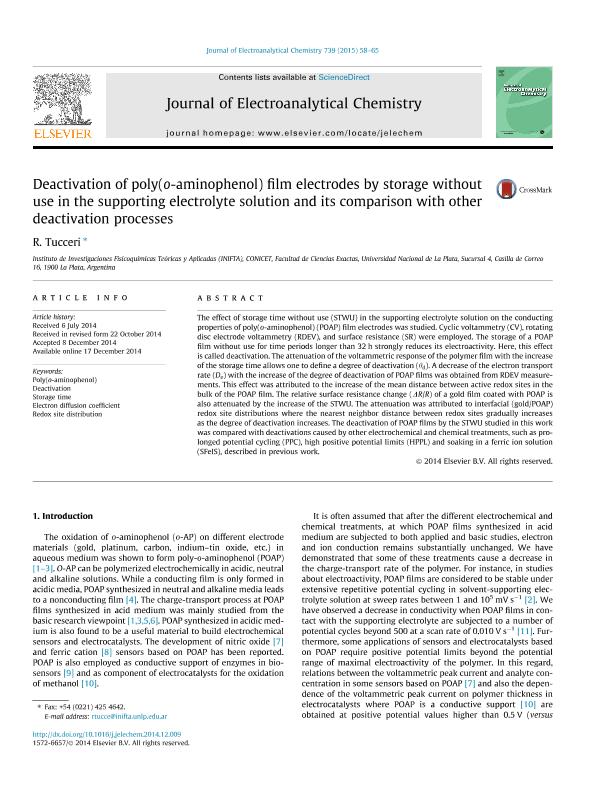Artículo
Deactivation of poly(o-aminophenol) film electrodes by storage without use in the supporting electrolyte solution and its comparison with other deactivation processes
Fecha de publicación:
02/2015
Editorial:
Elsevier
Revista:
Journal of Electroanalytical Chemistry
ISSN:
1572-6657
Idioma:
Inglés
Tipo de recurso:
Artículo publicado
Clasificación temática:
Resumen
The effect of storage time without use (STWU) in the supporting electrolyte solution on the conducting properties of poly(o-aminophenol) (POAP) film electrodes was studied. Cyclic voltammetry (CV), rotating disc electrode voltammetry (RDEV), and surface resistance (SR) were employed. The storage of a POAP film without use for time periods longer than 32 h strongly reduces its electroactivity. Here, this effect is called deactivation. The attenuation of the voltammetric response of the polymer film with the increase of the storage time allows one to define a degree of deactivation (hd). A decrease of the electron transport rate (De) with the increase of the degree of deactivation of POAP films was obtained from RDEV measure- ments. This effect was attributed to the increase of the mean distance between active redox sites in the bulk of the POAP film. The relative surface resistance change (DR/R) of a gold film coated with POAP is also attenuated by the increase of the STWU. The attenuation was attributed to interfacial (gold/POAP) redox site distributions where the nearest neighbor distance between redox sites gradually increases as the degree of deactivation increases. The deactivation of POAP films by the STWU studied in this work was compared with deactivations caused by other electrochemical and chemical treatments, such as pro- longed potential cycling (PPC), high positive potential limits (HPPL) and soaking in a ferric ion solution (SFeIS), described in previous work.
Archivos asociados
Licencia
Identificadores
Colecciones
Articulos(INIFTA)
Articulos de INST.DE INV.FISICOQUIMICAS TEORICAS Y APLIC.
Articulos de INST.DE INV.FISICOQUIMICAS TEORICAS Y APLIC.
Articulos(SEDE CENTRAL)
Articulos de SEDE CENTRAL
Articulos de SEDE CENTRAL
Citación
Tucceri, Ismael Ricardo; Deactivation of poly(o-aminophenol) film electrodes by storage without use in the supporting electrolyte solution and its comparison with other deactivation processes; Elsevier; Journal of Electroanalytical Chemistry; 739; 2-2015; 58-65
Compartir
Altmétricas




